What’s a Trabant doing at Revs Amid the Duesies and Bugattis?
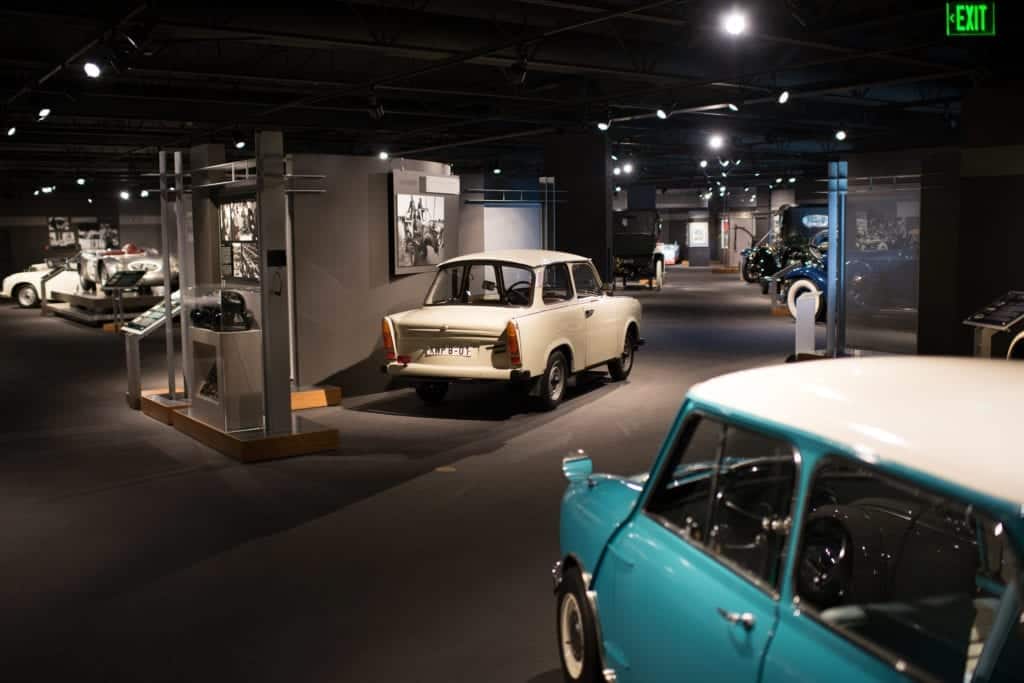
We were close to tears. We were in Berlin watching the Western Allies’ Checkpoint Charlie being decommissioned. The Berlin Wall had fallen and it was October 1990. We spent 50 pfennigs to rent a hammer and take symbolic whacks at the hated wall.
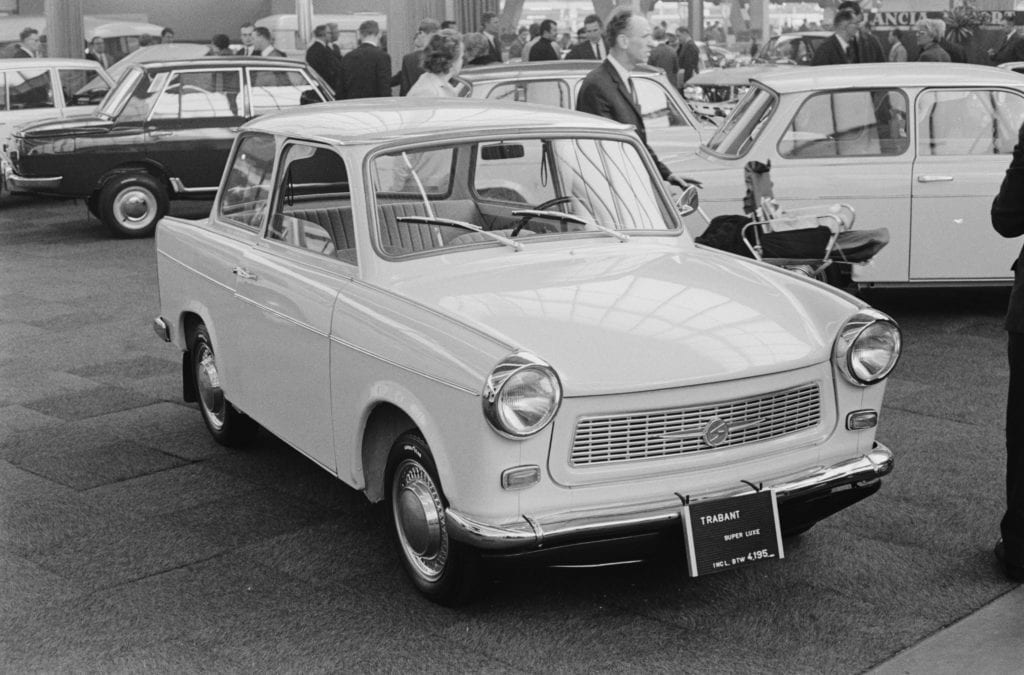
Later, driving down a highway following a Trabant — East Germany’s answer to the Volkswagen Beetle — we were close to tears again, for a different reason. Even Los Angeles during its smoggiest years couldn’t match the foul two-stroke exhaust of the “Trabi.” It is no wonder that in 1986 the United Nations declared East Germany the most polluted country in Europe.
Tagged with nicknames like “plastic bomber,” Trabants were famous for their two-cylinder engine, the Plain Jane styling of their plastic bodies and off-the-chart emissions. After the wall fell the car, like East Germany, quickly passed into history. A surviving specimen is displayed in the Collier Collection at Revs Institute. With the recent 28th anniversary of the Berlin Wall’s fall, the car’s story is worth telling.
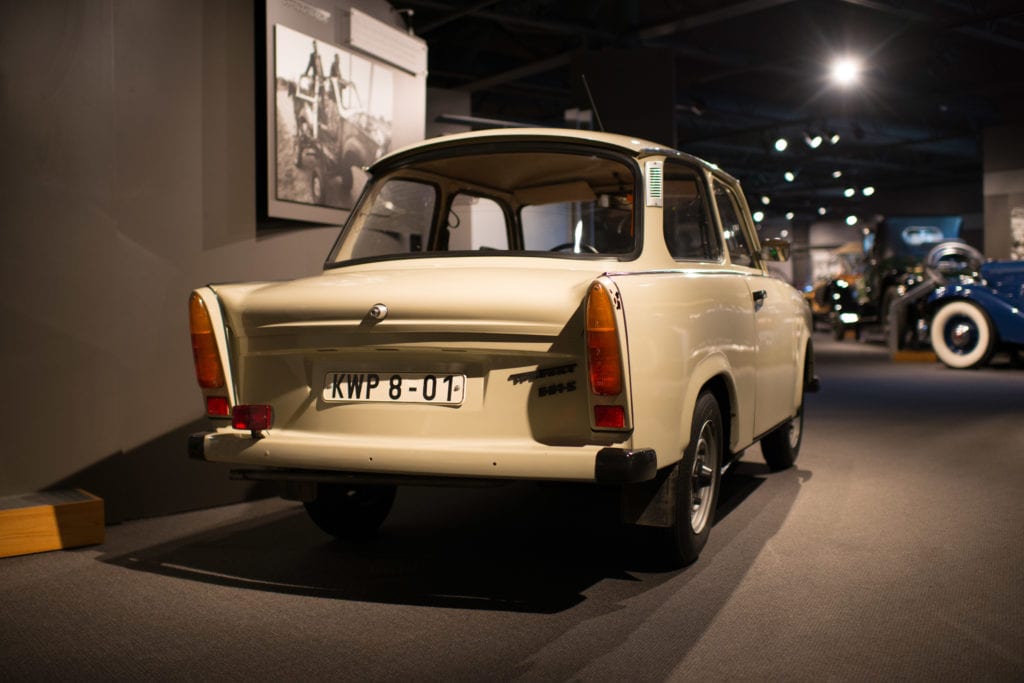
Why a Trabi among Porsches, Duesenbergs and Bugattis? Like the Ford Model T, Volkswagen Beetle, Citroën 2CV and Austin Cooper S, the Trabant was pivotal in getting a country’s drivers on the road.
That was no easy task in Communist East Germany. While West Germany flourished during its “Wirtschaftswunder” (economic miracle), East Germany languished under its Soviet-style planned economy. One of President Reagan’s favorite jokes was about the Russian who paid for a car and was told he could pick it up in 10 years.
“Morning or afternoon?” the buyer asked.
“It’s 10 years from now,” said the salesman, “so what’s the difference?”
The buyer replied: “Well, the plumber’s coming in the morning.”
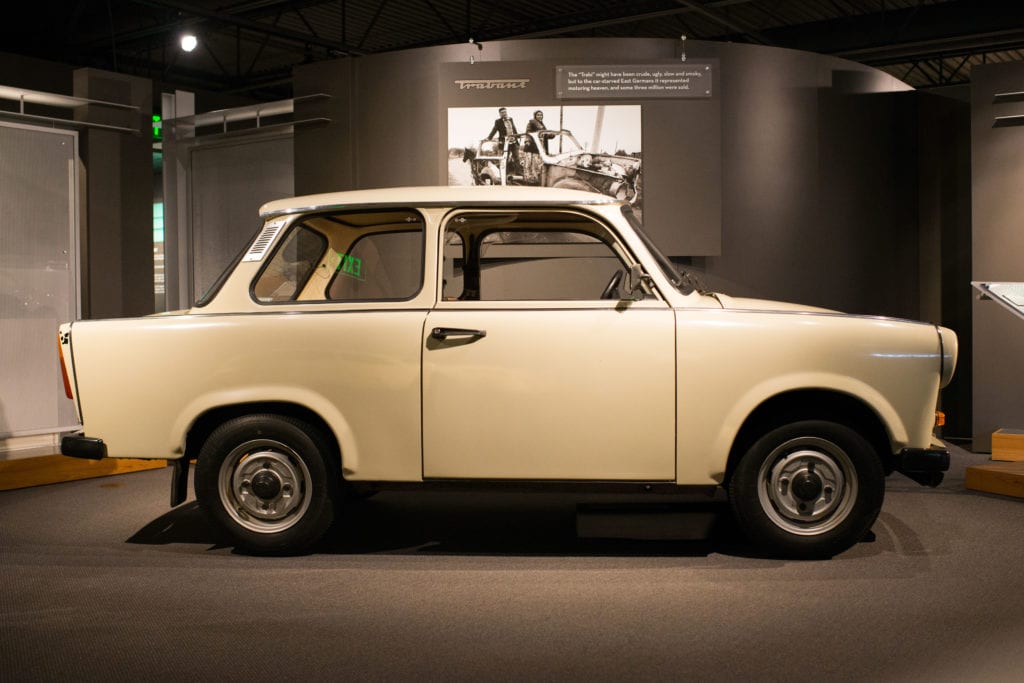
While East Germany didn’t have Detroit or Stuttgart, it did have Zwickau in Saxony. Zwickau was the home of the famed Auto Union Grand Prix cars, Horch luxury cruisers and birthplace of today’s Audi. In 1957 that facility became VEB Sachsenring, creator of the Trabant.
Nearly 3.1 million Trabis were assembled from 1957 to 1991. First came the Trabant 500 (1957-1952), the restyled 600 (1962-1964), a facelift for the 601 (1963-1991) and the Trabant 1.1 (1990-1991).
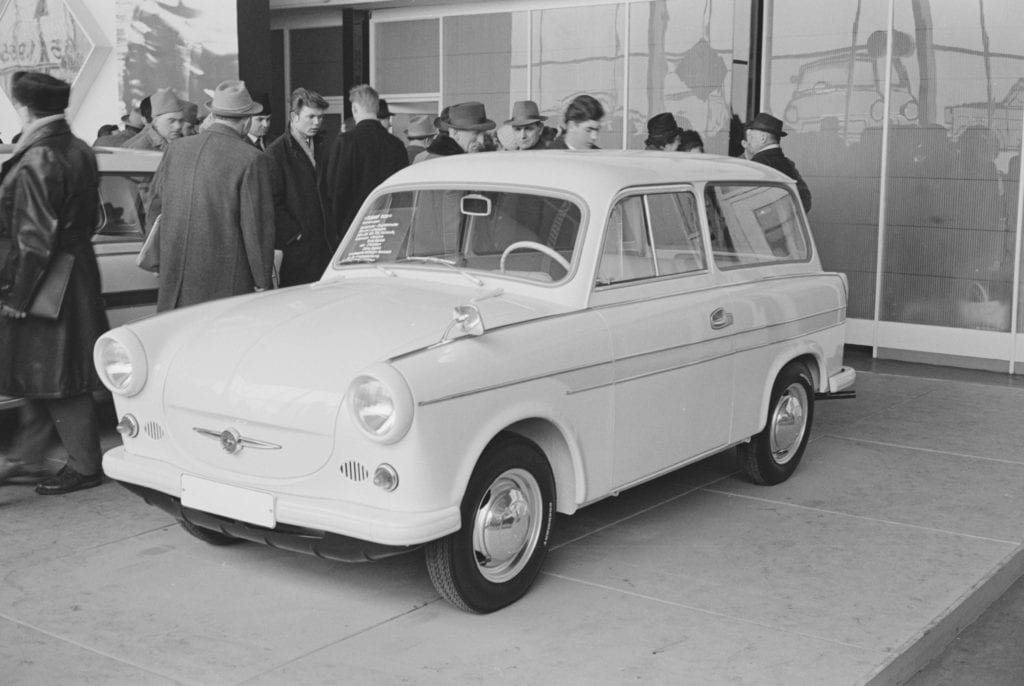
There were three basic body styles: sedan, station wagon and a “jeep,” a version of which was named, with inadvertent irony, the TRAMP. While the Trabant’s bland, everyday styling wasn’t distinctive, its material was. Owing to a shortage of steel, the body was made of Duroplast.
A concoction of phenol resins from East Germany’s dye industry and Soviet waste cotton, Duroplast was easy to shape, durable and perhaps edible. It’s said after East Germans began to abandon their Trabis, months later they’d find the cars had been gnawed on by pigs and goats. Many Trabi bodies were shredded and used as reinforcement in cement blocks.
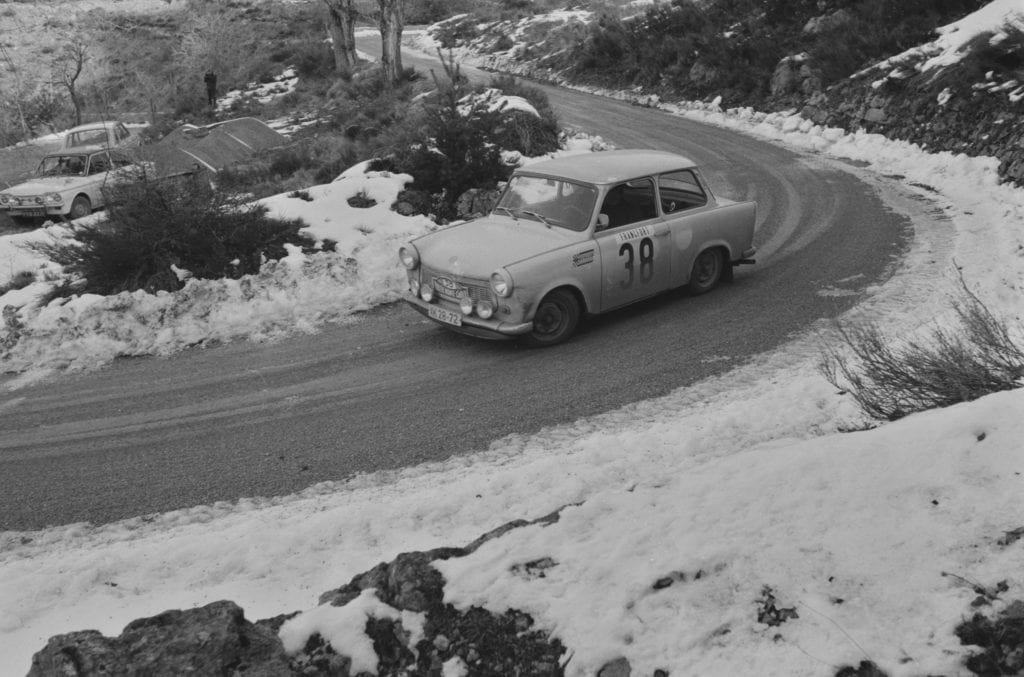
The body covered a steel chassis and measured 140.0 inches long, 59.3 inches wide and 56.7 inches tall. Today’s Fiat 500 is about the same length, but 4.8 inches wider and 3.1 inches taller. The small engine was mounted transversely up front with an independent transverse leaf suspension. The steering was rack and pinion, the brakes were drums all around.
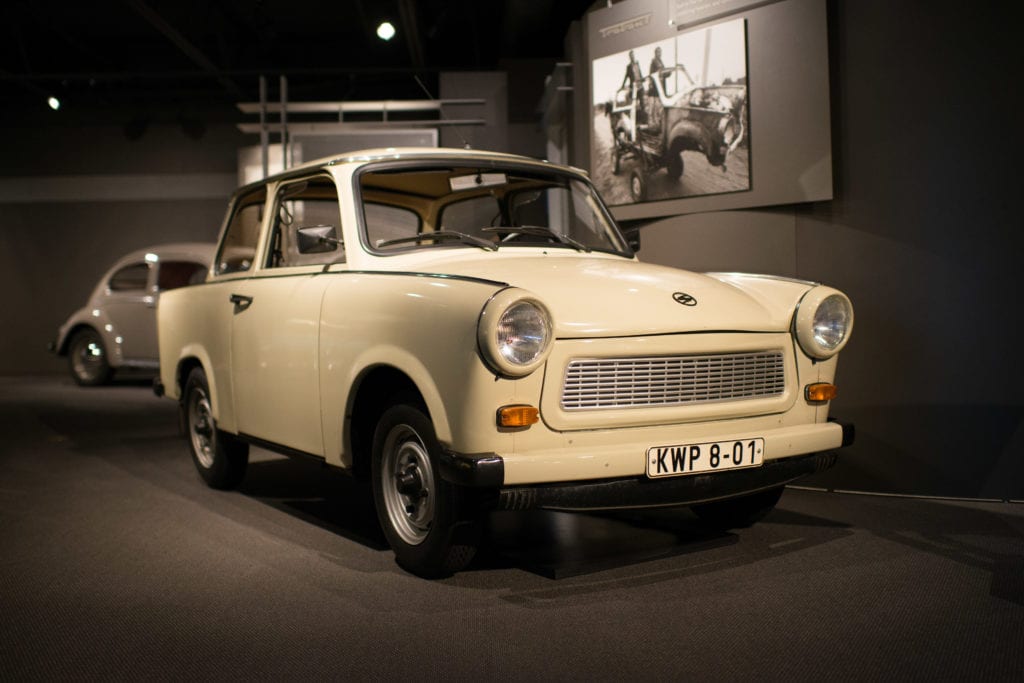
The “Little Stinker’s” two-stroke, two-cylinder engine was sized at 500cc from 1957-1962 and 594cc between 1963 and 1989. The last few years (1989-1991) featured VW Polo engines. The Revs’ 1989 Trabant sports 26 horsepower, about the same as today’s lawn tractors. Though it weighs just 1,352 pounds, the car requires 21 seconds of rowing through the 4-speed manual to get to 62 mph, the Trabant’s top speed.
The two-stroke engine required adding oil to the fuel tank when filling up with gas. The tailpipe smoke and hydrocarbon and carbon-monoxide emissions were off the charts.
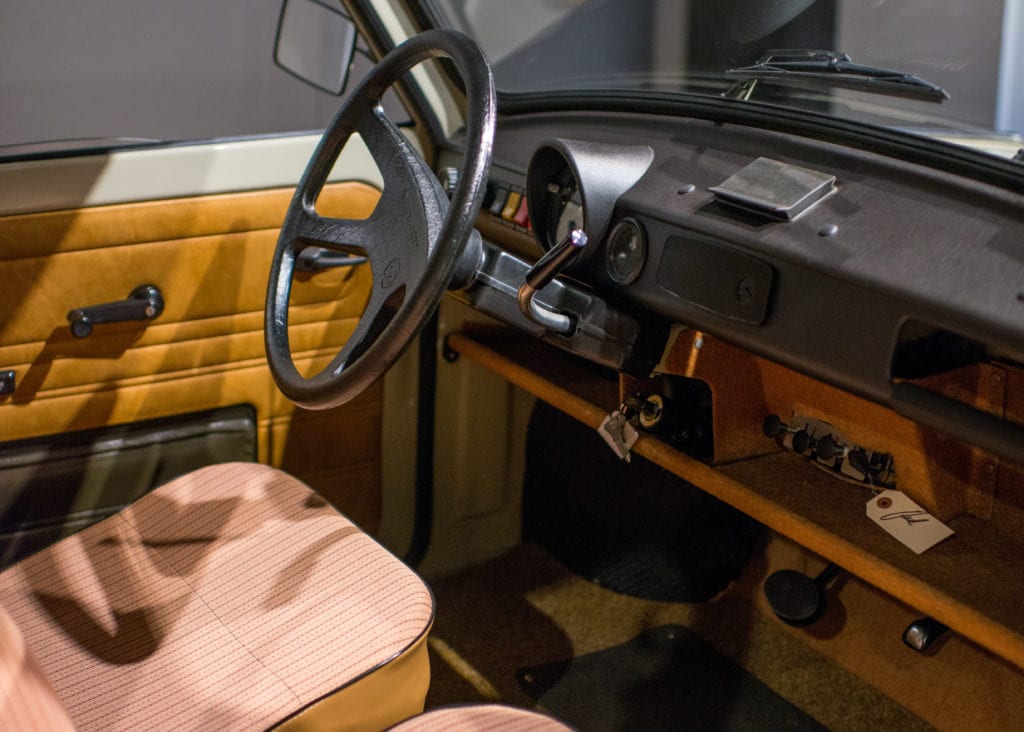
There isn’t much to the interior: seats, steering wheel, speedometer, gas gauge — early models had a dipstick — and a few switches. However, after being on the wait-list for years to get a Trabi and forking over their annual salary to buy it, buyers weren’t fussy.
The Revs Trabant is a perfect example. It was ordered in 1976 but not delivered for 13 years. Ironically, it was registered on November 9, 1989, the very day the Berlin Wall fell. The owner drove it 2,361 miles before parking it, likely in favor of a modern automobile.
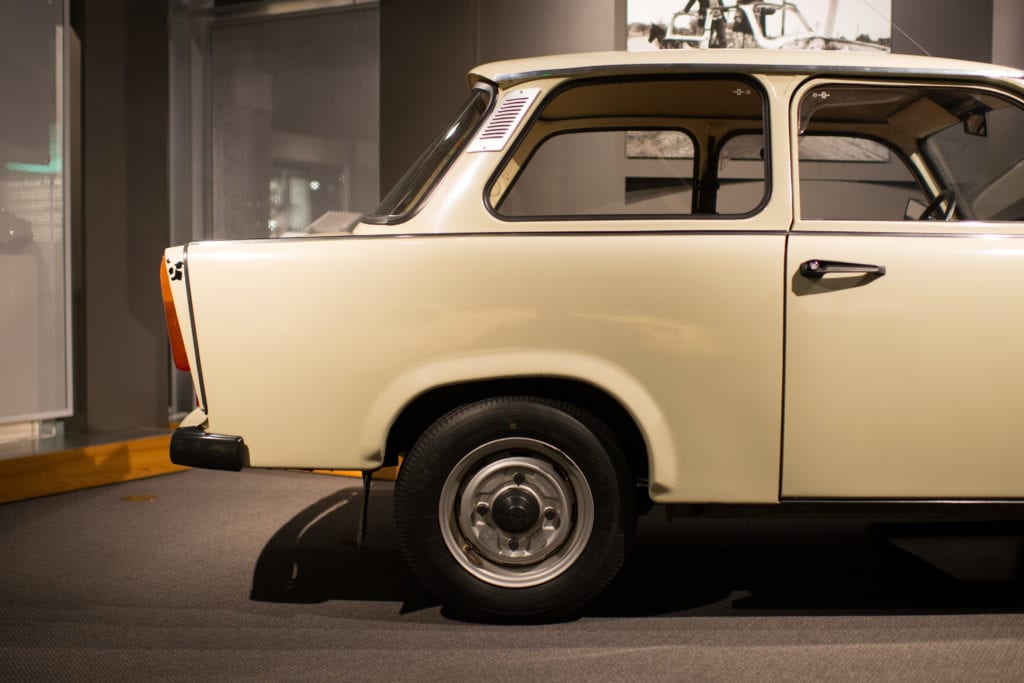
Trabant Serial No. 4260867 became part of the Collier Collection in 2004. It is a P601L, a relatively roomy version. The paint color on the Duroplast is called papyrus. This Trabi hasn’t been licensed for road use and is only driven occasionally to keep the engine ticking. (Literally.) Go to YouTube to hear a Trabant and see the exhaust.
As with many oddments of the past — Pee Wee Herman, E.T. dolls, waterbeds, etc. — Trabants still have a faithful, if small, following in Europe and the U.S.
So when you get to Revs Institute, do check out the Trabant. You’ll understand instantly why communism fell.

